I recently returned home from Saigon, Vietnam, and am excited by the changes I witnessed since my first visit in 2012. The city’s skyline has so many glitzy new additions as to be almost unrecognizable. The massive coils of electrical wires that once snaked overhead have been neatly buried, while pedestrian crosswalks (with lights!) have been added at many intersections. Western chains like Starbucks and Carls Jr. have spread like wildfire. Yet some things remain charmingly familiar: women in traditional hats selling fruit and snacks from baskets on the sidewalk; scooters swarming the streets like schools of fish; crumbling French colonial facades overgrown with tropical plants.
My parents joined me this time around, keen to explore a place of historical significance for Americans of a certain age. Our visit coincided with the lead-up to Tet, what the Vietnamese call Lunar New Year. Colorful decorations heralding the Year of the Rooster lent a fun and festive air to the already vibrant city. I loved having my family along even though it meant a less strenuous sightseeing schedule than normal. But even with our leisurely pace, we managed to see a lot thanks to the city’s easy walkability. It also helps that many of the key attractions are centered in District 1. The itinerary I’m sharing here combines the best of both trips, highlighting the Saigon of yore and the rapidly developing Asian metropolis of today. Here is how I recommend spending three days in Ho Chi Minh City.
A good starting point is Reunification Palace, the seat of power of what was once South Vietnam. Saigon fell to North Vietnamese troops in 1975, marking the end of the Vietnam-American War. Two of the tanks that crashed dramatically through the palace’s front gates remain parked on the lawn, symbols of the North’s victory. The building has been turned into a museum, with the 1970s interior left intact. Visitors can wander three floors of fully furnished rooms, as well as the rooftop veranda and underground bunker still hung with military maps. Reunification Palace closes every day between 11:00-13:00, so be sure to plan accordingly. Also note that the building doesn’t have a/c and can get oppressively hot in the afternoons.
Take an early lunch break at Nha Hang Ngon, which I happily discovered on my last trip to Vietnam. While I thought the quality had diminished slightly since that first euphoric experience, you really can’t go wrong with a big steaming bowl of pho inside an old French villa!
The French colonial empire of Indochina, which included most of modern-day Vietnam, lasted from 1887 to 1954. During that time, French authorities constructed an array of lovely government buildings and theaters in the hopes of wooing European settlers to the exotic outpost. The Saigon Central Post Office is a shining example from that era. A sunny yellow exterior (freshly painted since my last visit) fronts a cavernous space bustling with activity; my mom was amazed to find that the beautifully restored edifice still serves as a working post office! It’s a great place to buy postcards and stamps, as well as magnets, books, and other souvenirs.
Notre Dame Cathedral floats in the center of a busy street a few steps from the post office. This Roman Catholic church, erected on the site of a disused pagoda, was established in Saigon in the 1880s to serve the needs of French colonists. All the building materials were imported from France, while the statue of Our Lady of Peace gracing the small garden out front is made of Roman granite. Today the cathedral is only open for religious services.
A few blocks away is the unmissable Ho Chi Minh City Hall, a near replica of the Hotel de Ville in Paris for which it was originally named. A statue of “Uncle Ho,” arm outstretched to greet his followers, towers over the square out front. While not open to the public, the elegant building makes a perfect backdrop for photos.
My parents were ready for a break at this point, so we headed back to our hotel for a bit. I chose the Caravelle Saigon both for its convenient District 1 location next to the Saigon Opera House and for its historical status. Originally opened by the French in 1959, the Caravelle became home base for foreign journalists covering the war. It’s said that towards the end of the conflict, as the front moved ever closer to Saigon, reporters could watch the action from the rooftop bar – then the highest point in the city! That famous bar is still there, though thankfully a fiery sunset is the most action it sees these days.
We kept the French theme going with dinner at Au Parc Saigon. The Mediterranean menu has something for just about everyone, from hummus and falafel to pasta and grilled seafood. I opted for a Greek salad, Middle Eastern spiced chicken, and a cup of dark chocolate mousse. Every bite was perfection!
After a leisurely morning checking out some of the neighborhood shops, we stopped by L’Usine for an early brunch. I savored the pulled pork, pumpkin, and potato hash while my parents thoroughly enjoyed pillowy pancakes topped with honey butter and mixed berry compote. The coffee here is also excellent. After the meal, we perused L’Usine’s expertly curated shop. If I lived in HCMC, this is a space I would frequent!
Ben Thanh Market was built in the 1870s, making it one of the oldest French structures in HCMC. The cavernous space is filled to the rafters with a vast array of souvenirs, and throngs of tourists jostle for space along the narrow flues. We bought our requisite t-shirts and moved quickly on to the next attraction, eager to escape the crowds.
The Bitexco Financial Tower is easily identified thanks to the jaunty helipad perched on the side. Even with a slew of new high rises, the 68-story tower remains the tallest in HCMC. Saigon Skydeck on the 49th floor offers sweeping 360-degree views, and unique high-quality souvenirs can be found in the gift shop. To admire the distinctive helipad from ground level, stroll over to the Saigon River where a new park has been added.
Dedicate the afternoon to one of the city’s many museums. Ho Chi Minh City Museum is housed in lovely Gia Long Palace, another French-era construction. The grand staircase, long airy corridors, and tile floors are definitely worth a gander. The museum itself features an odd assortment of exhibits ranging from natural history and farm equipment to old maps and coins. There is an interesting display on the wedding rituals of the country’s various ethnic groups, including costumes, bride gifts and dowry items. Vietnam’s war history is also covered in depth.
My favorite restaurant from the earlier trip, Temple Club, was a bit of a disappointment the second time around. In fact, I hesitated to include it here. But that first meal was SO GOOD that I’m willing to give it the benefit of the doubt – maybe they were simply having an off night. Every table in the place was full, after all.
More adventurous types would do well to book a food tour with Saigon Street Eats. I previously ate my weight in crustaceans on the Seafood Trail tour, and would recommend it to anyone keen to experience the local culture.
Another highlight from my first trip was a visit to the Jade Emperor Pagoda, which was erected by Cantonese immigrants in 1909 to honor the preeminent Taoist god. The colorful temple filled with incense, worshipers, tourists, and a handful of feral dogs doubles as a turtle sanctuary. Feeding the creatures is a popular merit-making ritual for religious faithful. Jade Emperor Pagoda is a pleasant 30-minute walk from the Caravelle Hotel.
Take a slight detour on the way back to enjoy lunch at Pho Hoa Pasteur, one of the city’s most popular pho noodle joints. You’ll be rewarded with simple, hearty flavors in a lively yet unpretentious atmosphere.
For a decadent dessert, make your way to Fly Cupcake Garden Cafe. While I haven’t been to the new location, Fly Cupcakes are some of the most creative and delectable I’ve had the pleasure of eating. I know from experience that it can be difficult to choose between the many varieties, so order two to make up for all the calories lost wandering around HCMC in the searing heat.
If the weather is nice, consider spending the rest of the afternoon relaxing by the Caravelle’s outdoor swimming pool. This is a vacation after all!
Alternatively, you can opt for a day trip to the infamous Cu Chi Tunnels. The tenacious Vietnamese dug a vast network of underground tunnels to aide in their fight for independence against the French. Several decades later, the tunnels played a key role in the North Vietnamese defeat of the American-South Vietnamese alliance. Going down into those same tunnels as a tourist is a surreal experience. Even though those at Cu Chi have been widened enough for larger Westerner-sized bodies to squeeze through, I still felt claustrophobic after a five minute crawl. I can’t imagine living down there in the dark for months at a time! The site’s anti-American vibe might be a bit disconcerting for some – which is partly why I didn’t take my parents – but it was enlightening to learn about the war from a different perspective.
How would you spend three days in Saigon?
PIN IT!



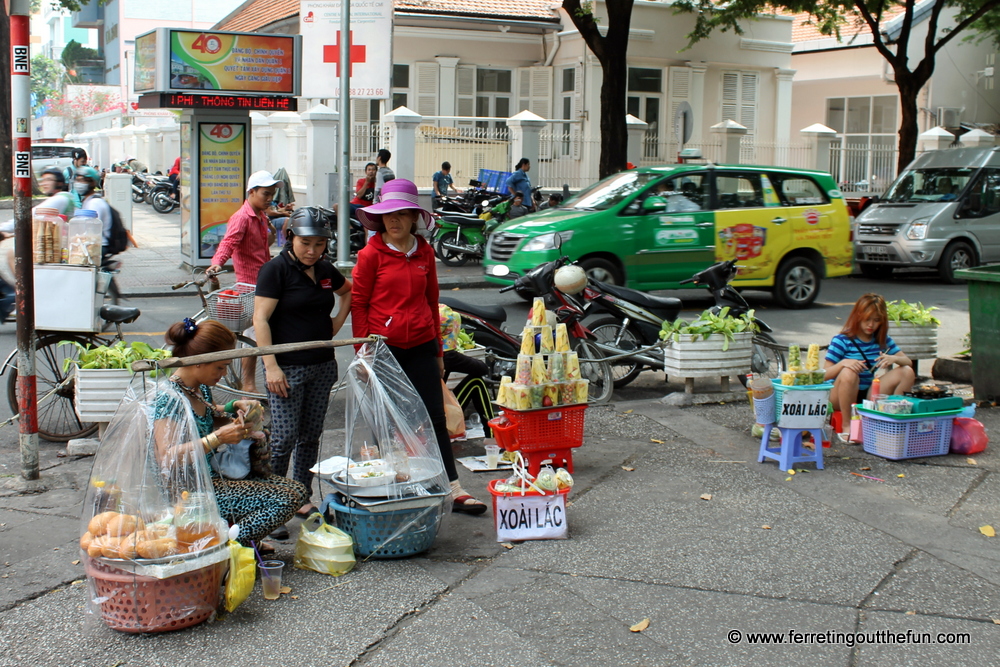
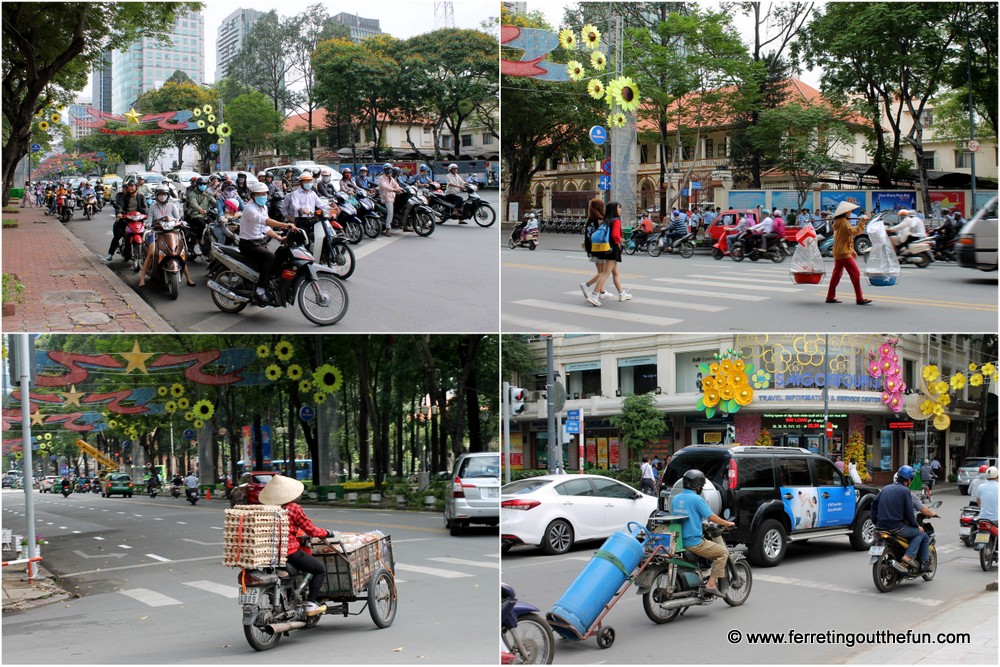
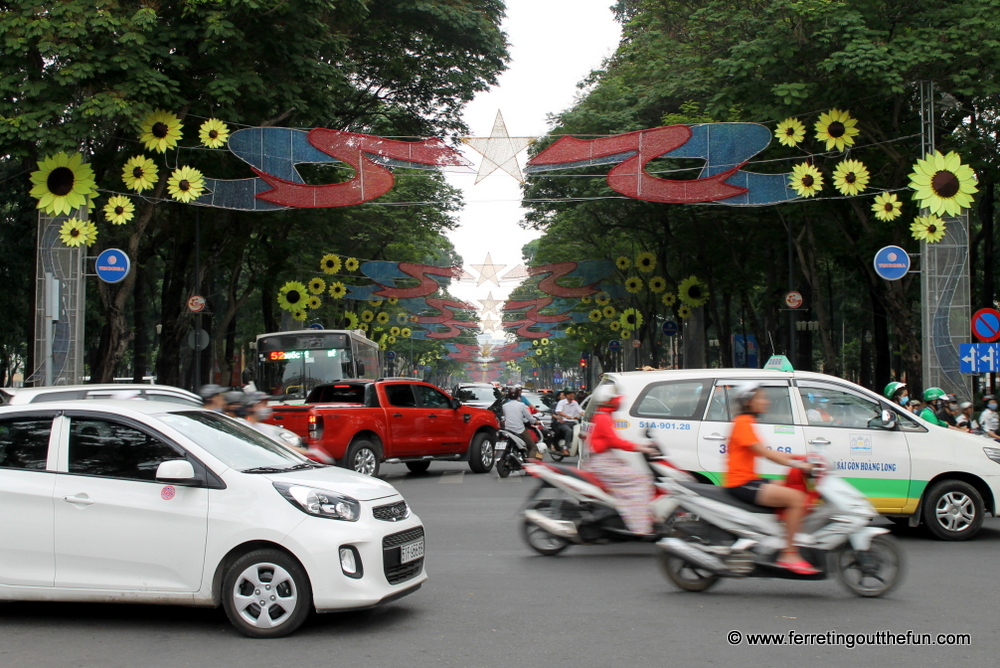


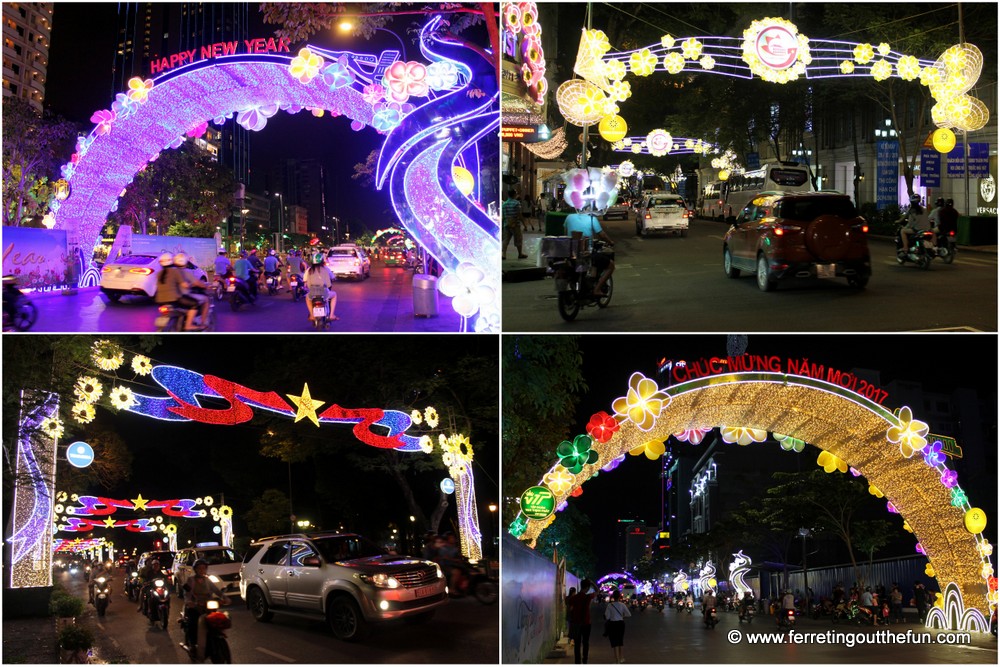

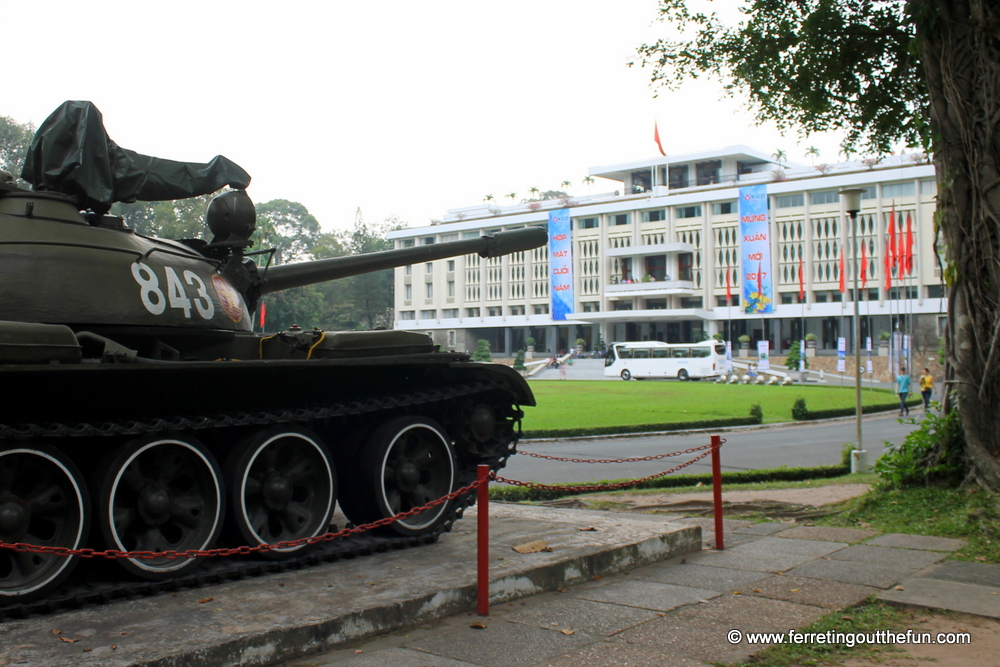

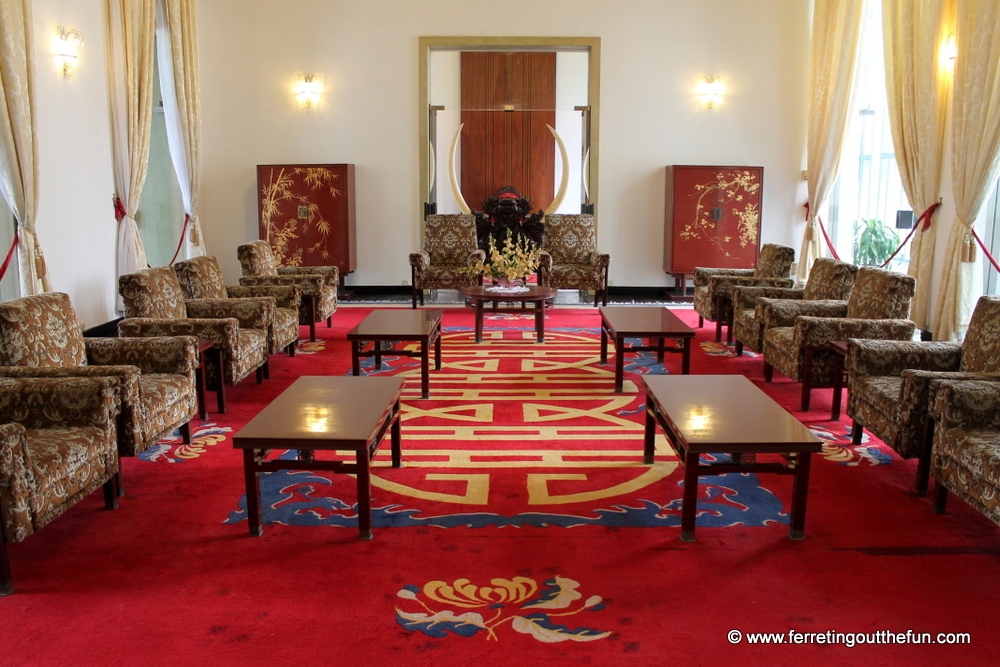
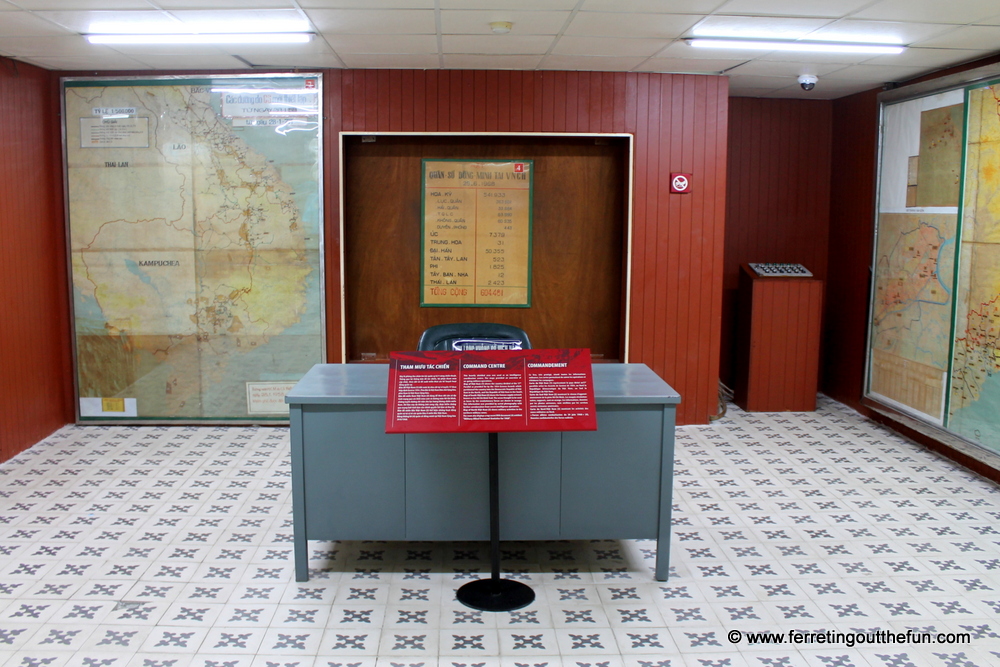
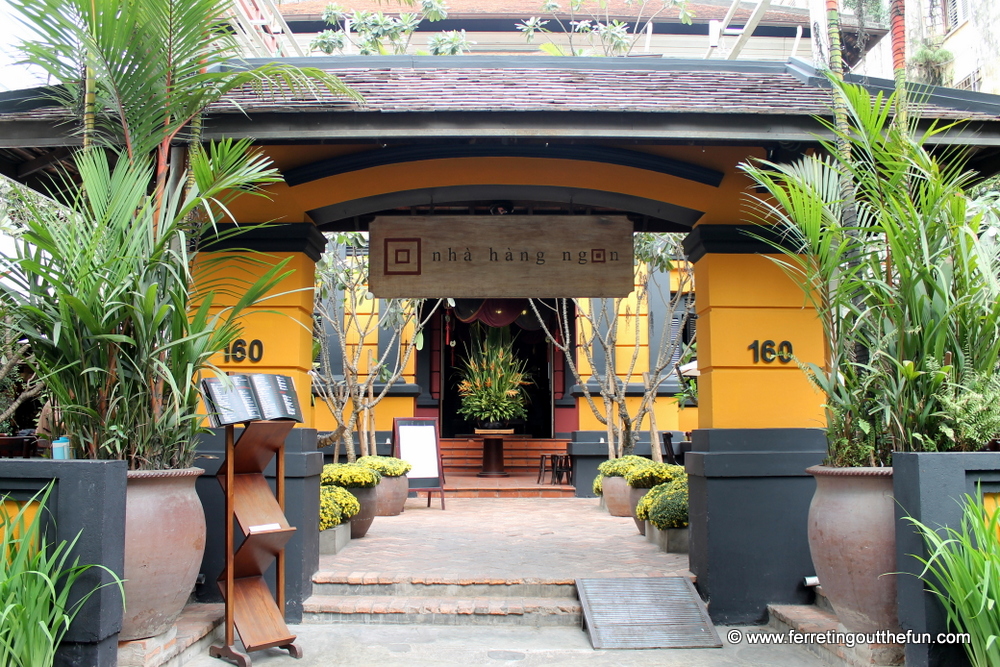
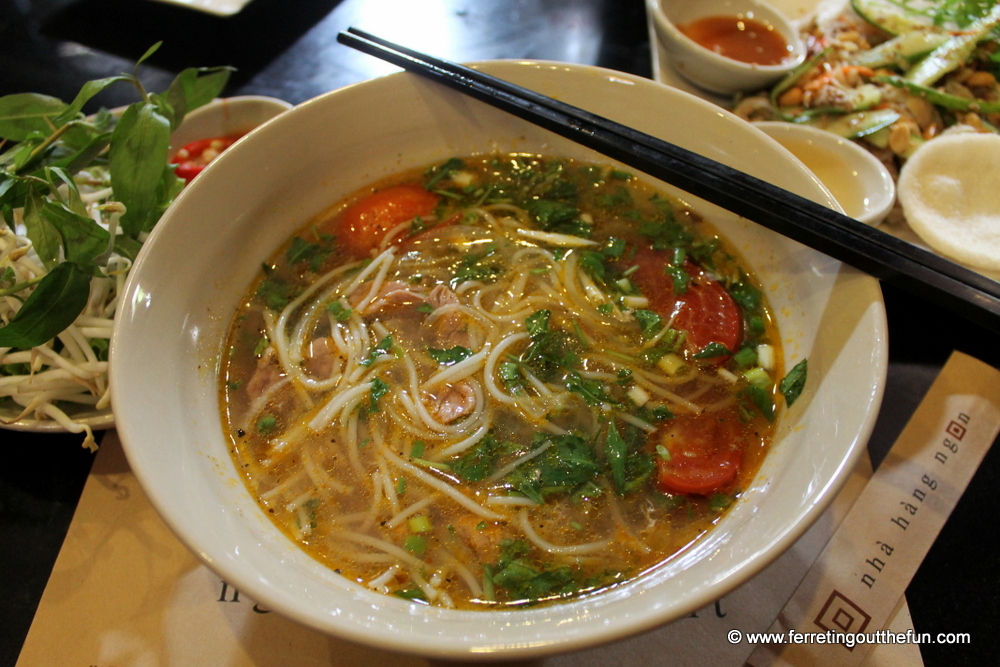


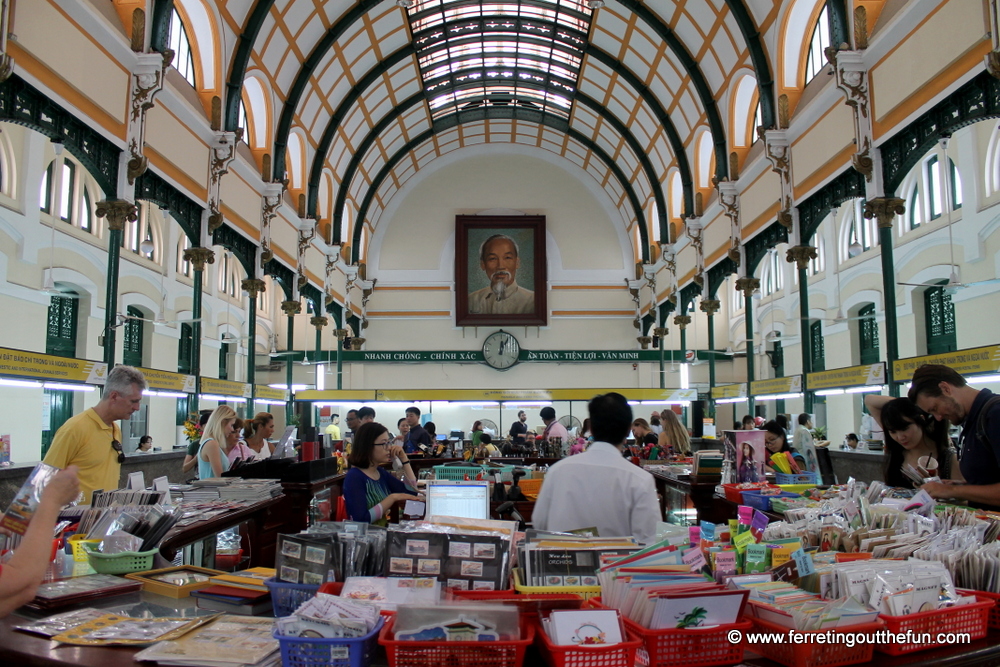




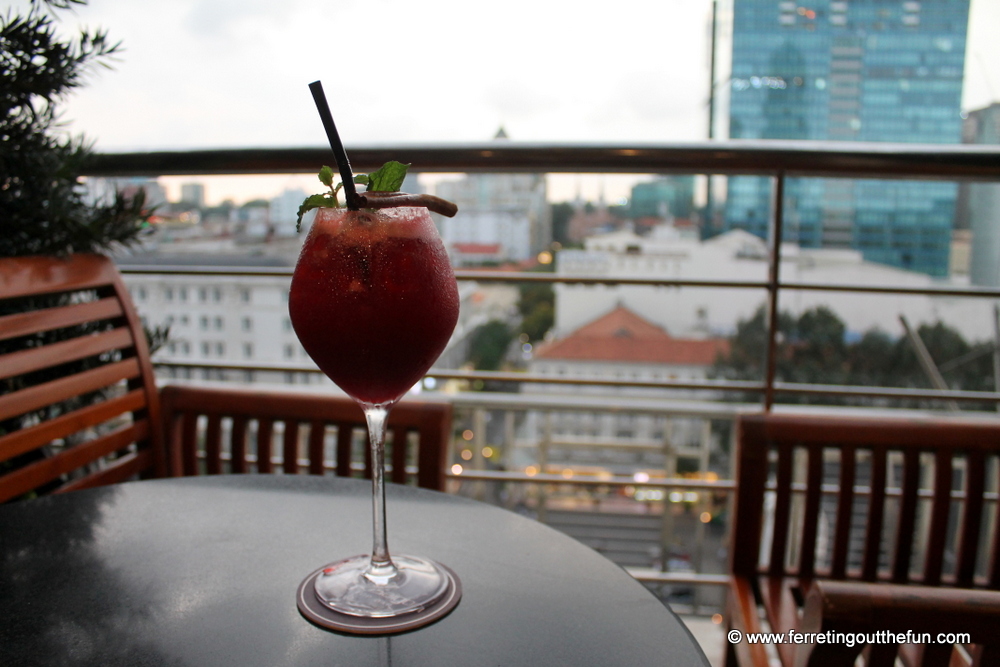


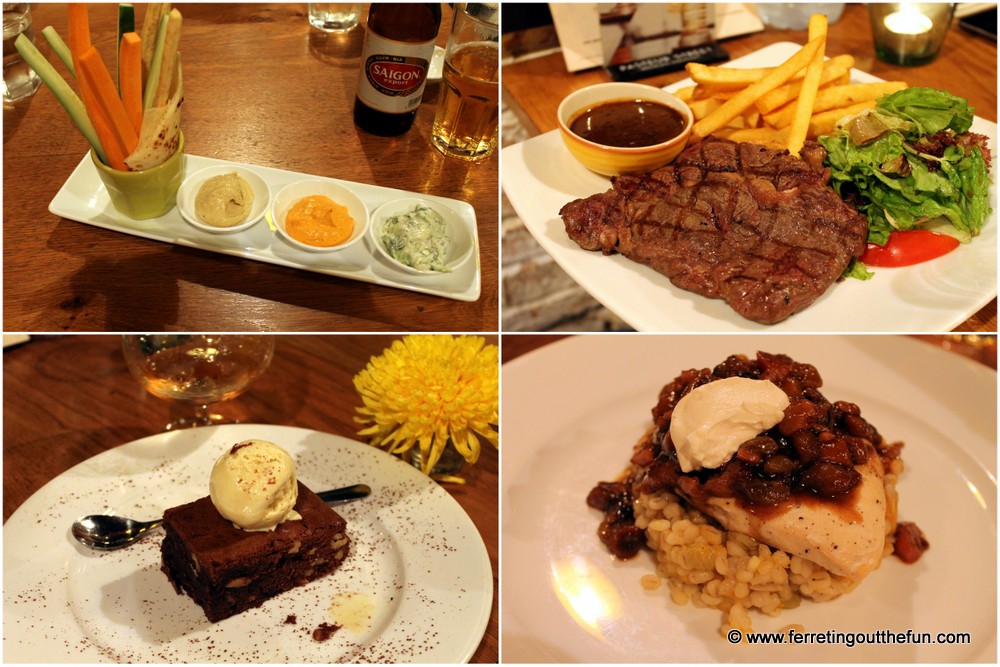

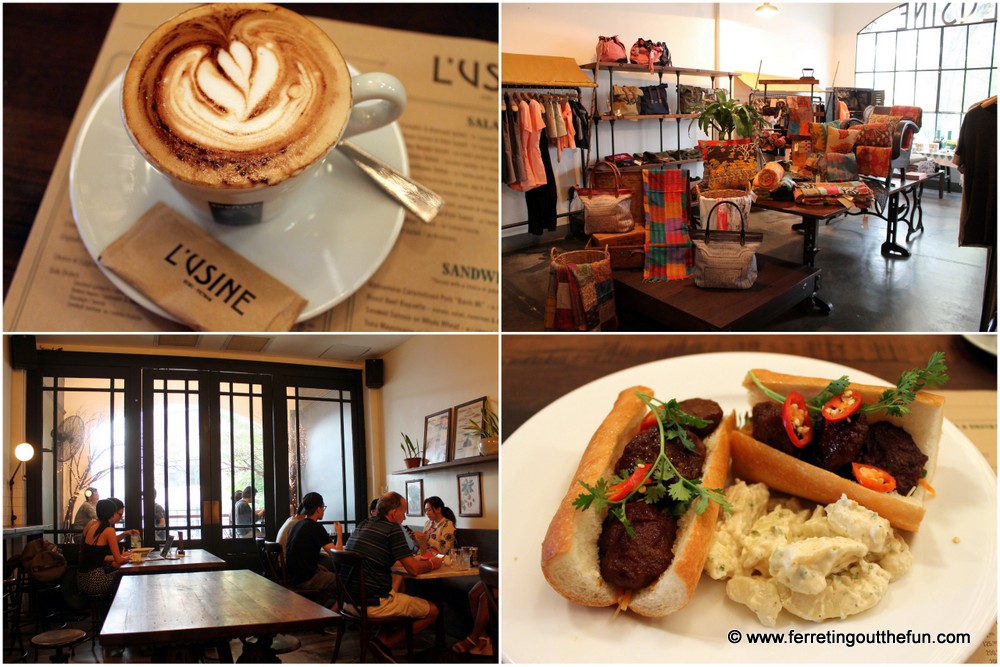


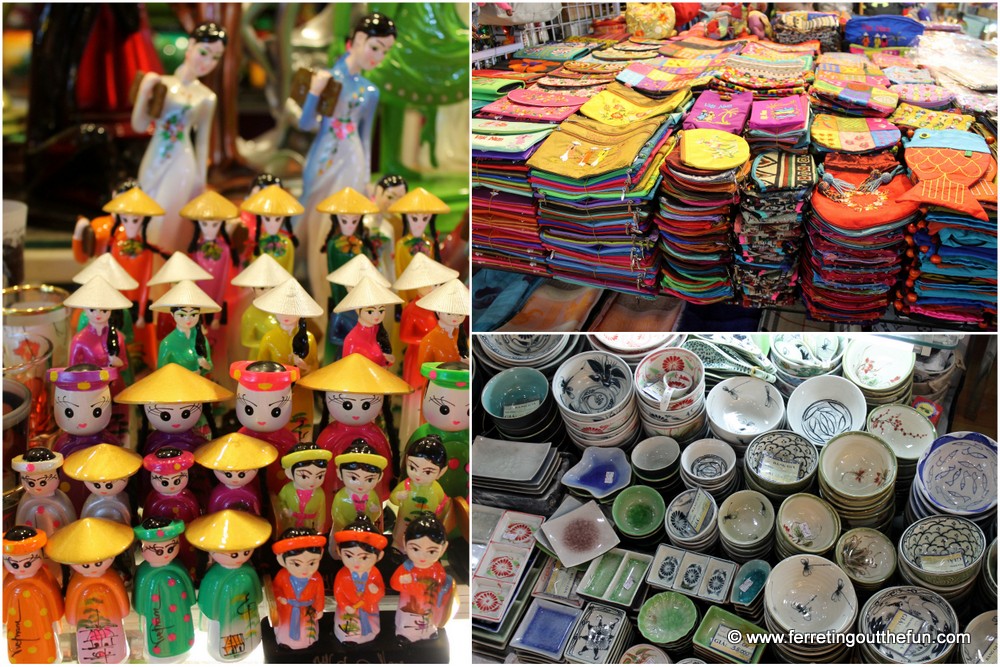





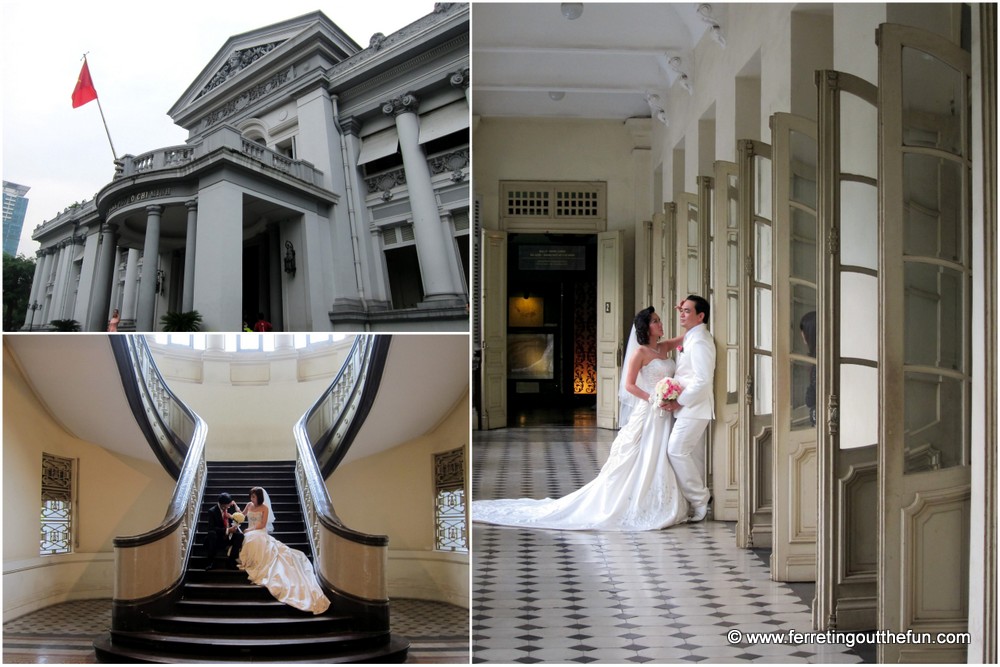
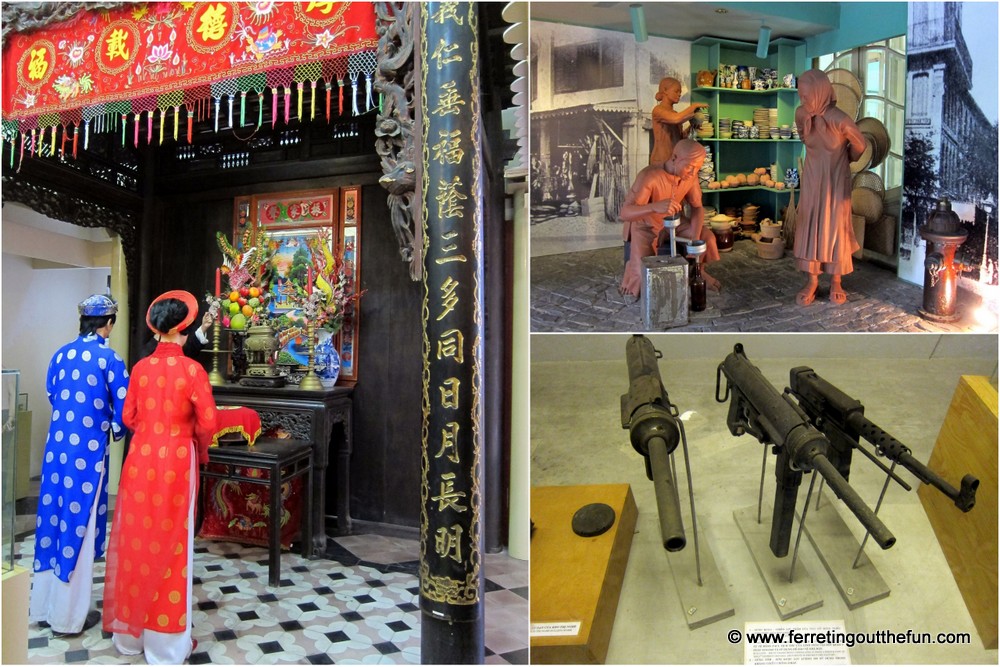
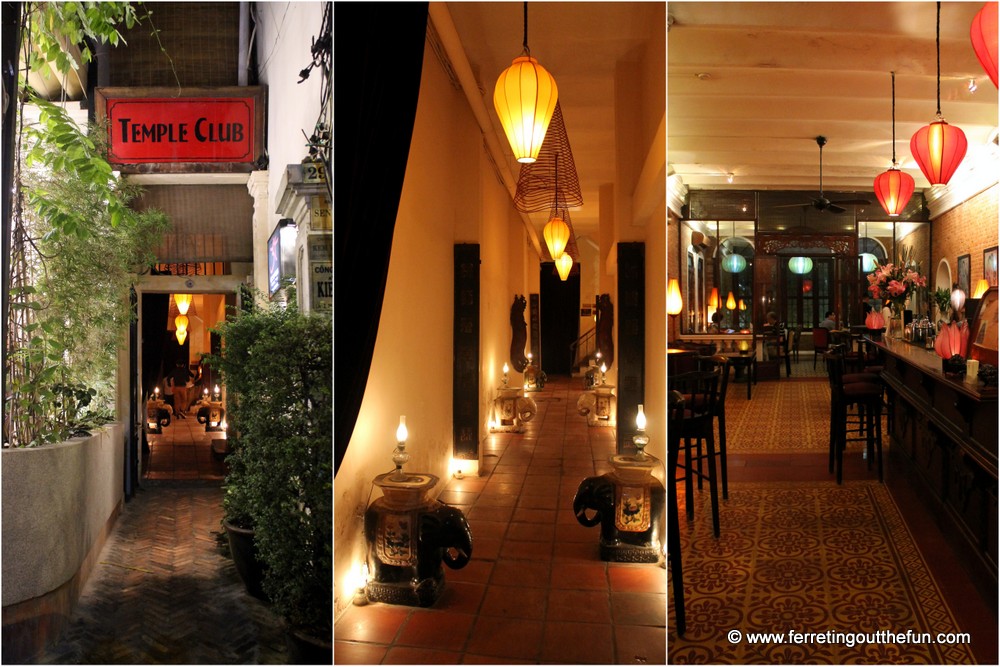
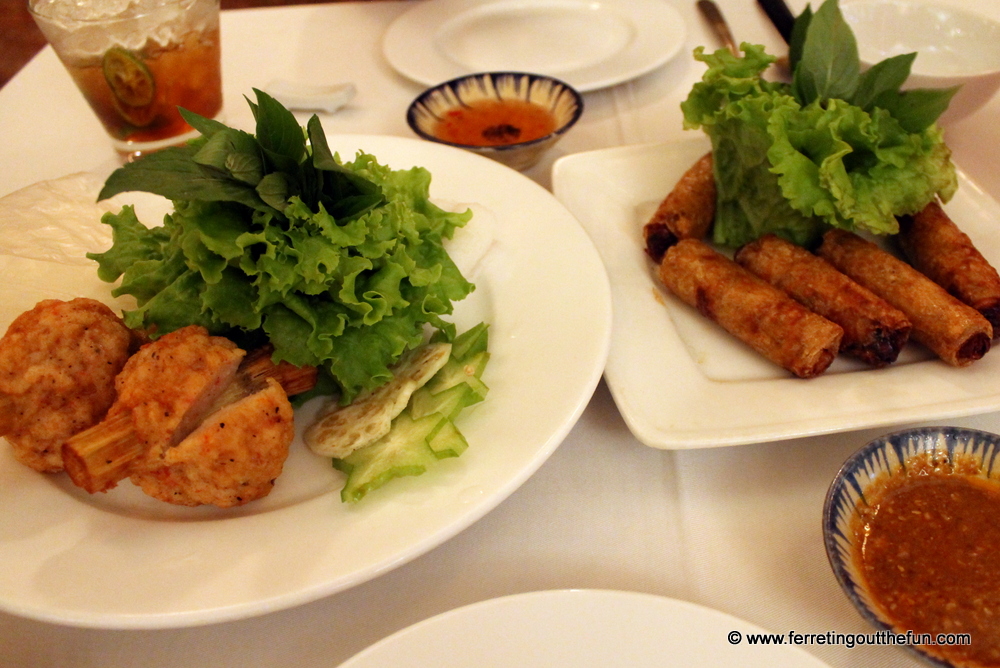

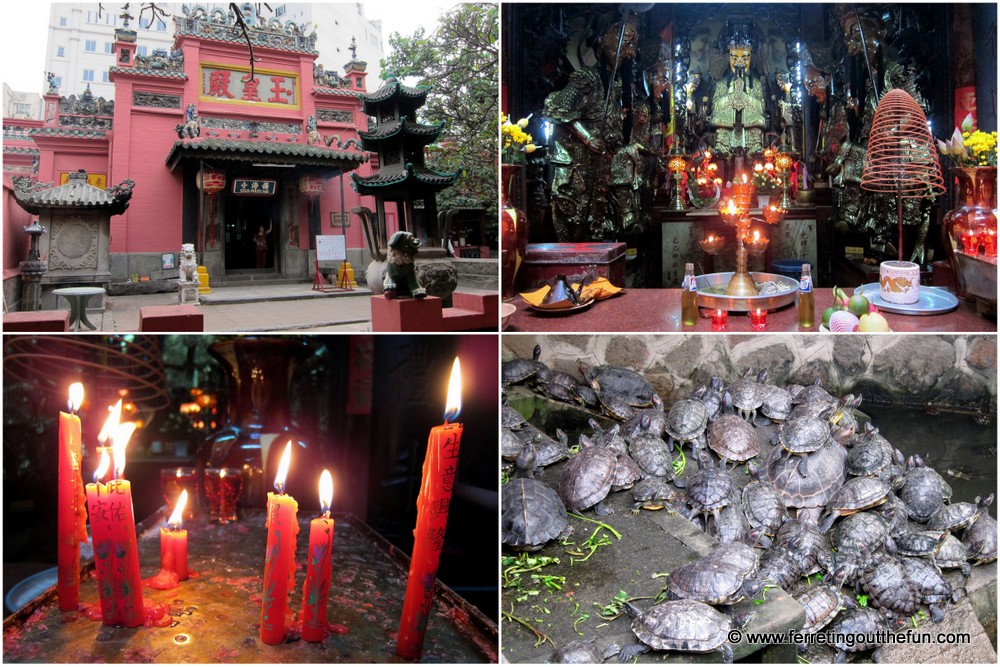
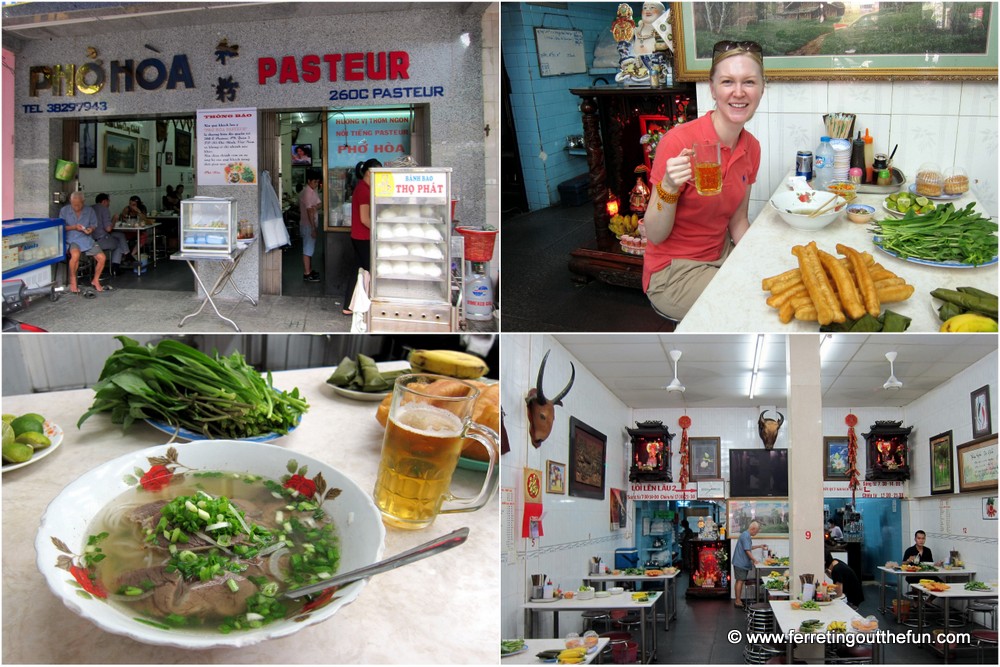
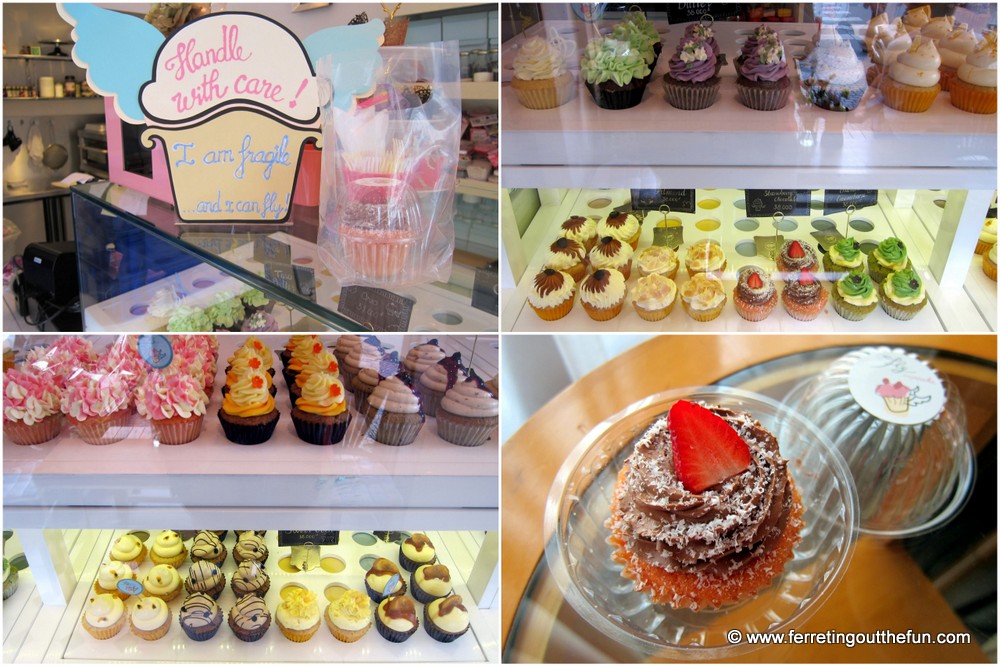

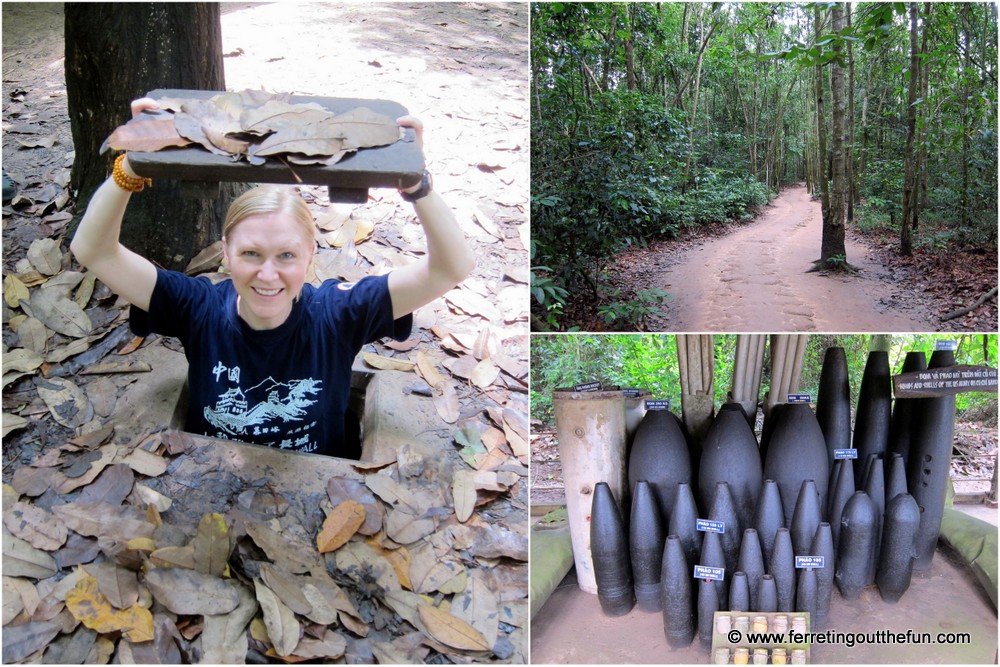
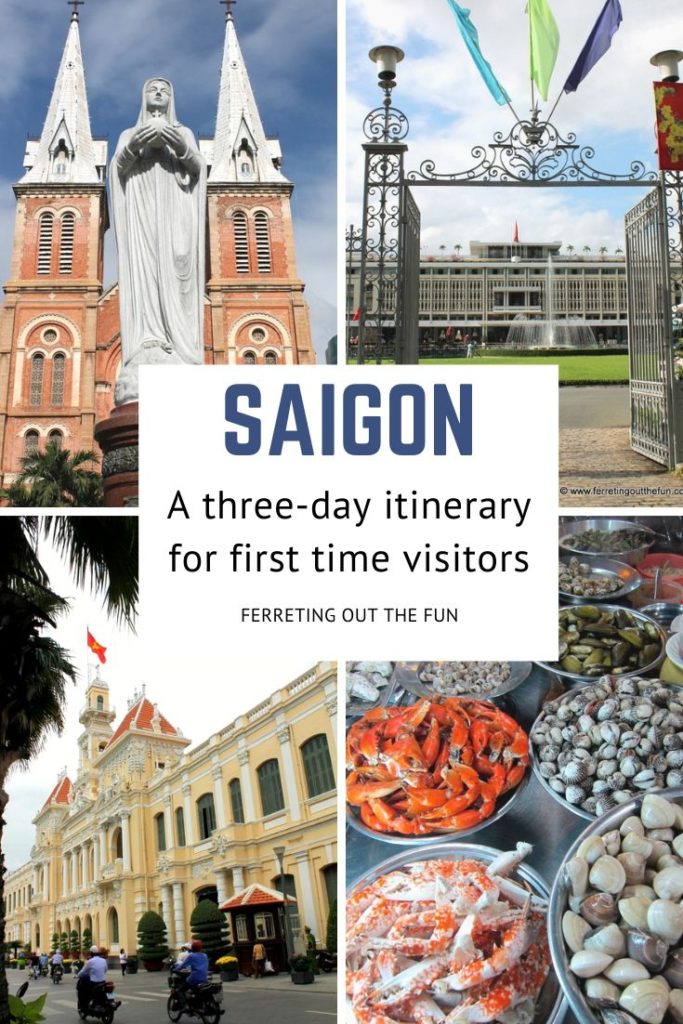
Reading this en looking at all the photo’s of the city and the food, I can’t wait to go there in September. Do you think 3 days is enough or too much?
Depends on flight times and if you plan to go to Cu Chi. We arrived Friday night and left Monday afternoon, which definitely wasn’t enough time. I really like HCMC, especially now with all the new shops and restaurants that have opened. Quality and selection have improved, but everything is still super affordable. We were sad to leave!
Lovely photos, Heather. My daughter and I spent 3 days in Saigon (the locals all seemed to refer to it in this way) last month, and we loved it. I agree that the Cu Chi Tunnels are a fascinating tour, and the other thing I’d heartily recommend is an afternoon on the Mekong Delta. The people were friendly and welcoming, and that really helps make a trip enjoyable.
Thanks, Wendy! I was supposed to take a day trip to the Mekong Delta on my first visit, but my traveling companion came down with a bad case of food poisoning and we had to cancel. And with my parents, we simply didn’t have enough time (really just 2.5 days). But now that the visas are good for a year, I might go back to Vietnam and explore some of the areas I have yet to see – Mekong and Hoi An are high on the wish list!
Wow, Vietnam is looking so neat! It’s amazing how you made a lot of beautiful photos, Heather.
Thanks, Agness! It was fun to go back and see how much it’s changed!
We too would like to have those 3 days in Ho Chi Minh City (Saigon) just as you have so well pictured and described. Thanks for your contributions to the wonders of world travel.
Thanks so much for your comment, Robert! I hope you are able to make those three days in Saigon a reality!
I really enjoyed our trip to HCMC with you. Just wish it hadn’t been so darn hot. Really enjoyed our walk along the river. I know Dad was overjoyed at finding Carl’s Jr.
That was a very fun trip and I’m so glad I was able to take you both!
Get ready for more heat – there’s no escaping it in this part of the world 😉
Hi!! What time of the month did you visit Vietnam? I noticed that on the pictures it is raining.
Hi, I went in the middle of January.
For me, the most interesting place in Saigon is the Museum of War Remnants. The photos are drastic but it’s worth seeing them.
Thank for the tip, Greg! I’ll add that to the list for my next visit.